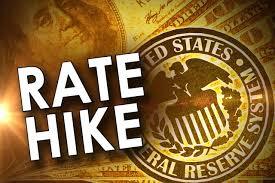U.S. Federal Reserve Raises Interest Rates - Comments
 |
Atlanta September 26, 2018; The Federal Reserve moved its key U.S. interest rate higher today, an increase widely expected by the industry and one that will likely put more pressure on the U.S. automobile business, adding cost to consumer loans and further exasperating the growing affordability problem. Please find below commentary from our experts on the subject. If you would like to speak to anyone from the Cox Automotive team of analysts and economists, feel free to reach out. We’d be happy to help you.
From Jonathan Smoke, Chief Economist, Cox Automotive
There’s no question the Fed’s actions this year are impacting car buyers. The discount rate, which the Fed controls, is up now 100 basis points, year-over-year. Loan rates, however, move independently and have risen on average slightly more than the Fed’s moves in the last 12 months. The “best available” average advertised 60-month new-vehicle loan rates reported earlier this week by Bankrate were already up about 75 basis points over this time last year. That amount of rate inflation alone would translate into 2 percent higher payments, if all other variables remained the same—loan term, down payment, and loan amount.
That increase would turn a $500 loan payment into $510 a month, which may not seem significant. Over a 60-month loan, however, the price is up $600 over the same purchase last year.
It will not get better for consumers or the industry from here. The seven increases over the last 22 months have already changed the market from one that had peak new-vehicle sales two years ago to one that now has peak used-vehicle sales. Clearly, the Fed isn’t finished, as they have indicated an additional increase will come in December, with more expected in 2019. Consumers need transportation, but there are limits to what they can afford. By necessity, the higher rates are forcing consumers toward vehicles that will deliver the payment that works. As a result, the new-vehicle market is challenged by affordability, and ironically the most affordable and most popular vehicles are imported and face the threat of new tariffs which will drive their prices higher.
From Charlie Chesbrough, Senior Economist, Cox Automotive
Higher interest rates are having an impact on the U.S. economy and the vehicle market may be one of the best indicators of this. With stock markets and consumer confidence at near-record levels, and unemployment near 20-year lows, vehicle sales should also be at record highs. Yet vehicle sales hit their peak two years ago and have been declining since, as interest rates and monthly payments have risen.
It’s an interesting time for automotive shoppers: Waiting for a better vehicle price is likely a mistake. Higher interest rates, coupled with higher production costs from tariffs, is putting upward pressure on vehicle prices during a critical period for the industry. Another rate increase is expected in December, so monthly payments are likely to follow. In addition to rising prices and payments, inventory levels are in a better condition this year than last, leading automakers to keep incentive spending in check. This combination of factors is likely pricing some buyers out of the market and may be leading other shoppers to buy now rather than wait. These buying conditions are likely to continue to deteriorate and suggests next year’s vehicle market will be under even more pressure.


